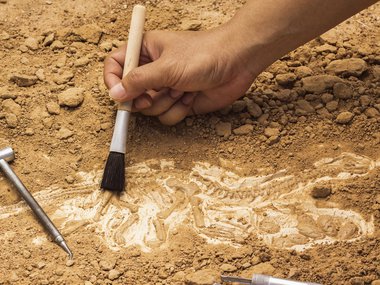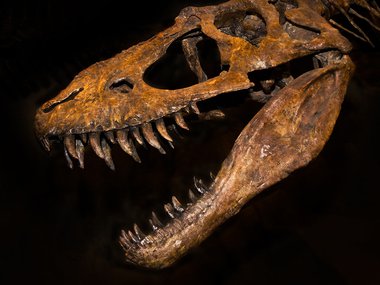Bringing the Dead to Life: The Evolution of Paleoart
Science is not a set of facts to be memorized, but an ongoing journey toward greater understanding. Nowhere is this more evident than in the field of dinosaur paleontology and the artwork it inspires.
Through advancements in paleontology—the study of traces or remains of organisms that lived at least 10,000 years ago—our understanding of extinct life forms is constantly evolving. With each new discovery, scientists can more accurately reconstruct how these extinct organisms looked and lived.
Furthering the link between science and artistry, paleoartists utilize our understanding of fossils, along with living animal anatomy, behavior and ecology to visualize extinct species interacting within a bygone ecosystem.
Harnessing science, technology and imagination, we continue to learn more about the diverse range of dinosaur species that dominated life on Earth for nearly 180 million years.
From early impressions of sluggish, lizard-like creatures to modern examples of brightly-colored beasts covered in feathers, our perceptions of dinosaurs have evolved over the last 200 years of paleontological discoveries.
1820s Early Impressions
The study of ancient life is younger than you might expect. Paleontology took shape in the 19th century when naturalists began analyzing fossils through a scientific lens for the first time, arriving at the earliest notions of dinosaurs as ancient, long-extinct creatures. With only fragmentary evidence available, early attempts to depict dinosaurs portrayed them as monstrous lizards.
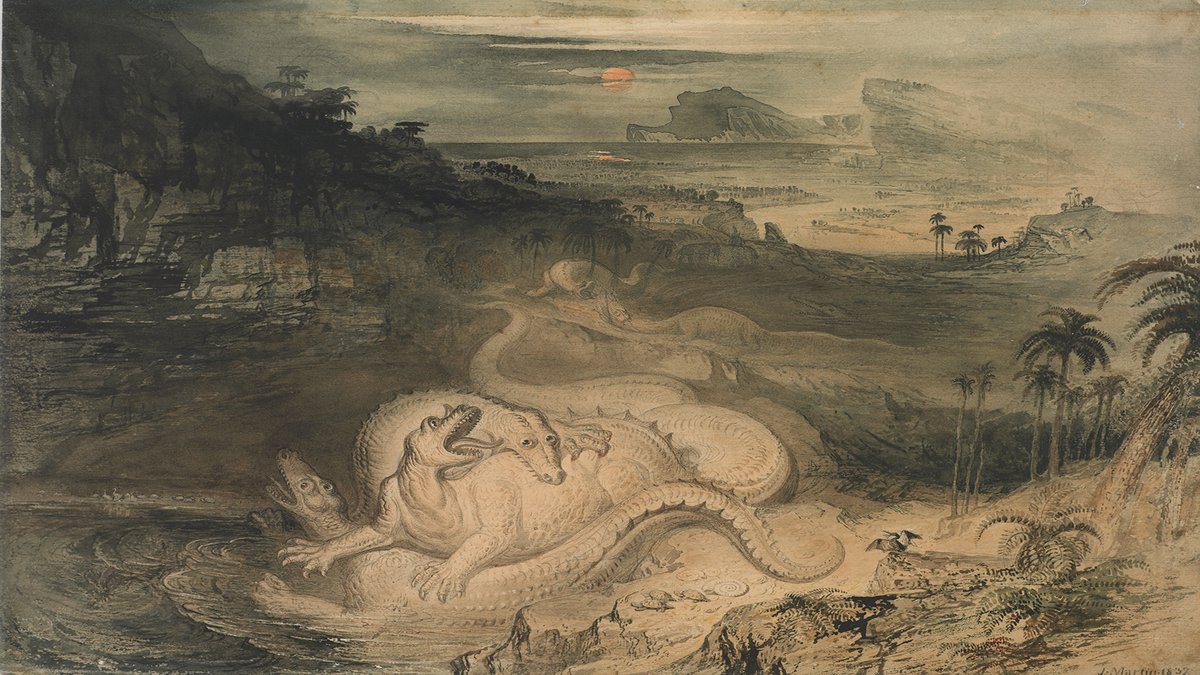
John Martin, The Country of the Iguanodon (1837). Courtesy of Te Papa Tongarewa Museum of New Zealand
1850s Link to Modern Reptiles
While early interpretations may seem peculiar to us now, they were actually considered valid representations at the time. Findings from the 1820s–1850s led paleontologists to believe that dinosaurs resembled modern reptiles, such as crocodiles. As a result, they were illustrated as sluggish creatures with scaly skin and sprawling stances for nearly a century.
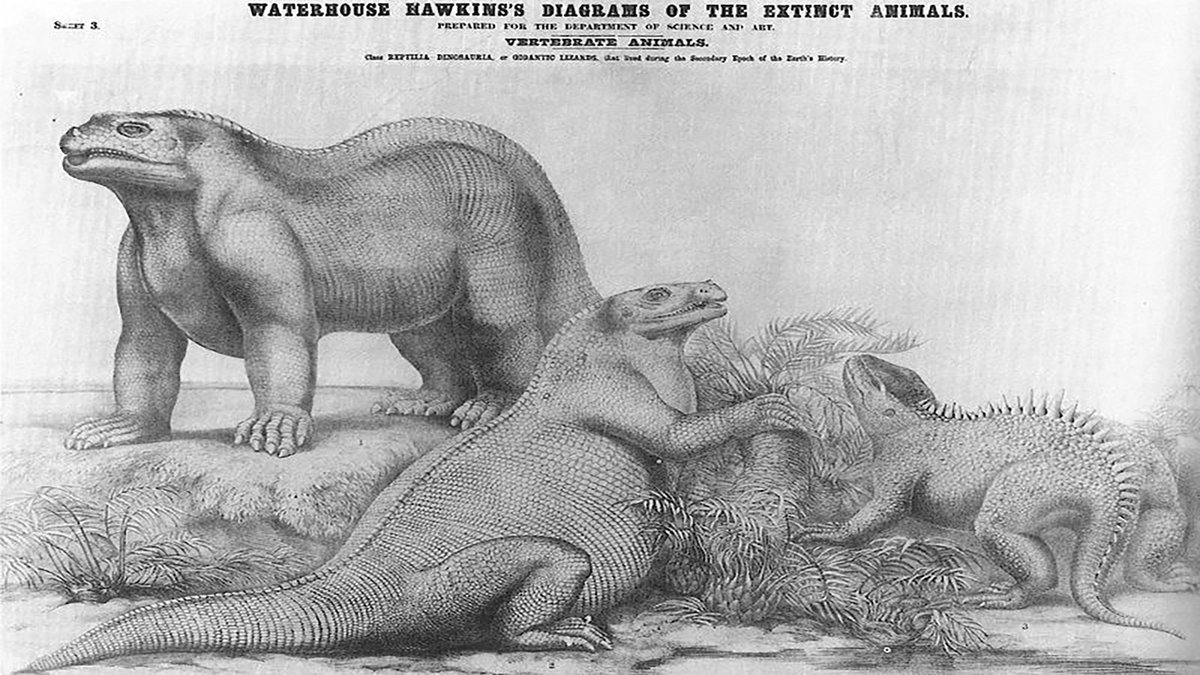
Benjamin Waterhouse Hawkins, Diagrams of the Extinct Animals (1862). Courtesy of the Natural History Museum, London
1860s From Quadrupeds to Bipeds
Based on new fossil discoveries from New Jersey in 1858, paleontologists concluded that some of these prehistoric reptiles must have stood on two legs, a major revelation at the time. They also hypothesized that the tail supported a vertical stature like that of a kangaroo, a misconception that persisted for a century.

Edward Drinker Cope, The Fossil Reptiles of New Jersey from the American Naturalist Journal (1869). Courtesy of the University of Chicago
1870s The Great Dinosaur Rush
Fueled by the rivalry between Edward Drinker Cope and Othniel Charles Marsh, an explosion of fossil findings from the 1870s–1900s revealed just how diverse dinosaurs truly were. During this period, known as the Bone Wars, over 130 new species were recorded.
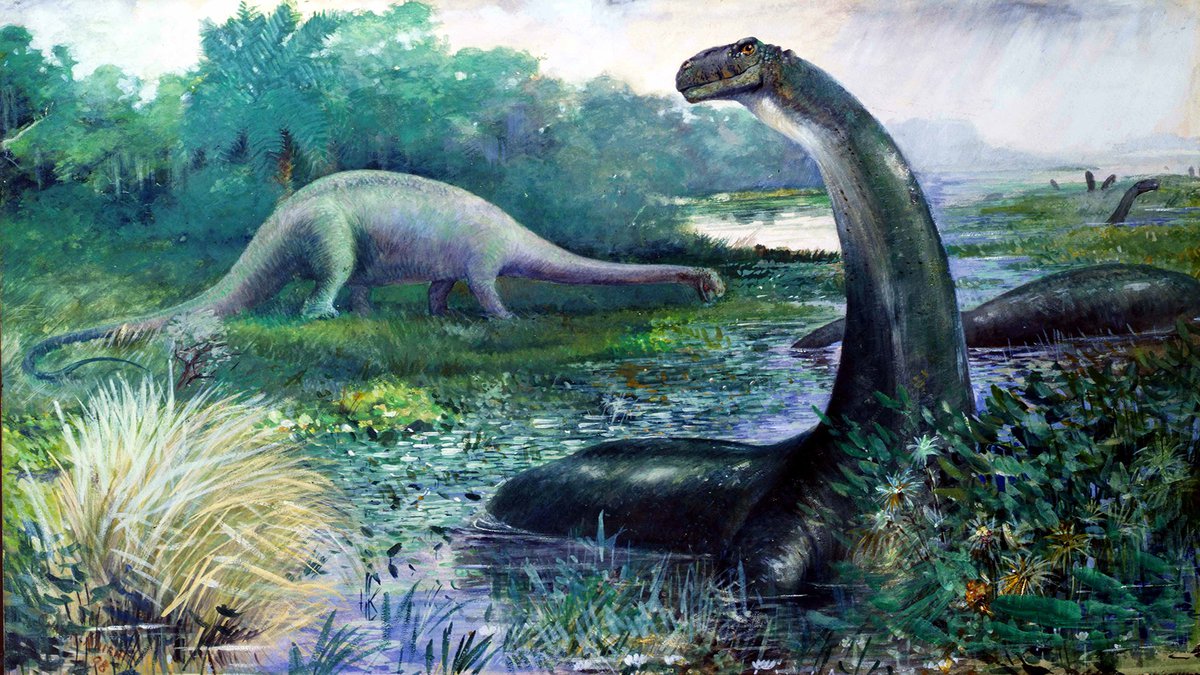
Charles R. Knight, Brontosaurus (1897). Credit: American Museum of Natural History Research Library
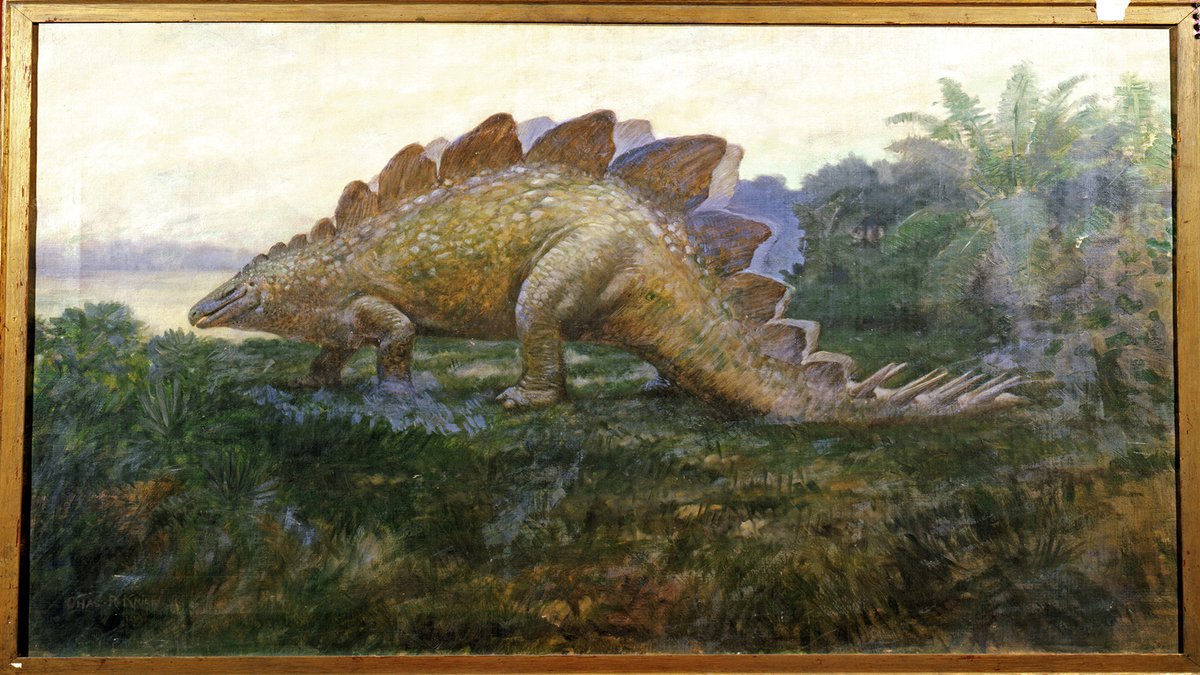
Charles R. Knight, Stegosaurus (1901). Credit: American Museum of Natural History Research Library
1890–1960 - Stagnation of the “Classic” Era
While advancements in paleontology slowed during the first half of the 20th century, paleoartists continued to explore the relationships between the diverse array of species uncovered during the Bone Wars. This period of “Classic” paleoart featured colorful, romanticized imagery that popularized the false portrayal of dinosaurs as sluggish, dimwitted animals.

Rudolph Zallinger, The Age of Reptiles (1947). Credit: Peabody Museum of Natural History, Yale University
1960s The Dinosaur Renaissance
Beginning in the 1960s, revolutions in the field of paleontology dramatically changed how we came to see dinosaurs. Key discoveries popularized the idea that some species were warm-blooded, agile creatures with high metabolisms. For the first time, dinosaurs were depicted as energetic animals with complex lives.
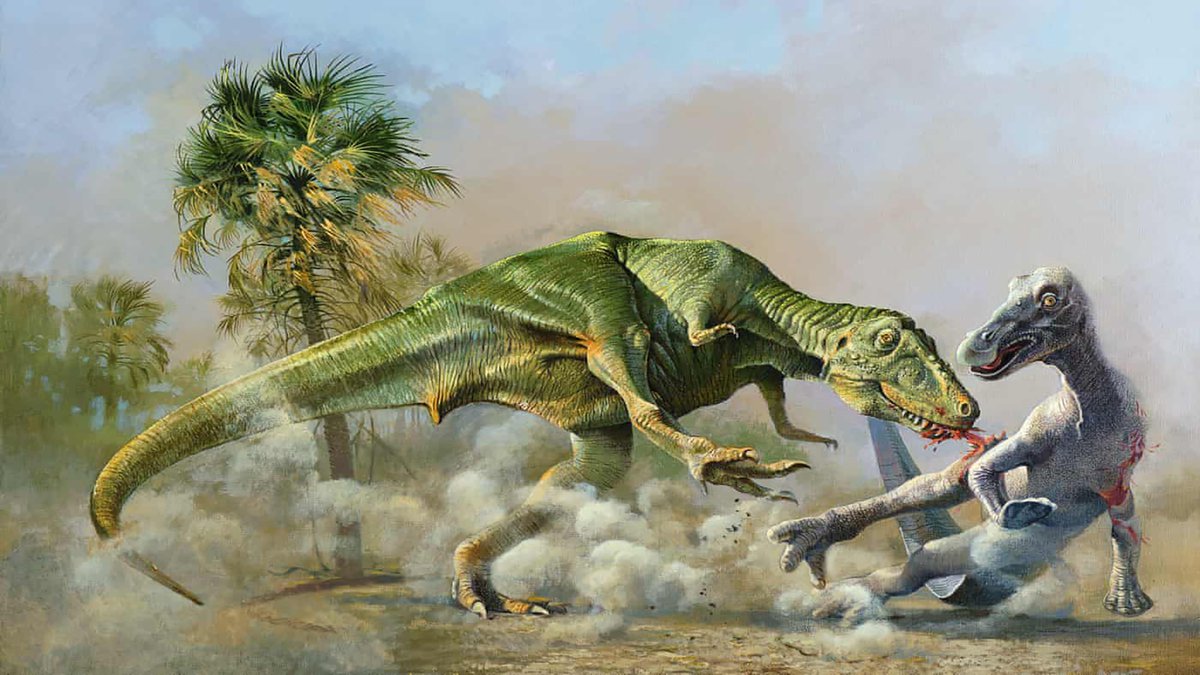
Eleanor (Ely) Kish, Tyrannosaurus and Edmontosaurus (1976). Credit: Canadian Museum of Nature
1990s Affirming the Link to Birds
Fossils with both reptile and bird-like features were first discovered in the 1850s. This sparked a century-long debate as to the relationship between birds and dinosaurs. In the 1970s, when paleontologists compared skeletal features of key specimens, it was concluded that birds and theropod dinosaurs shared a common ancestor. Crucial discoveries from the 1990s further supported this narrative when evidence suggested that some non-avian theropod dinosaurs also had feathers.
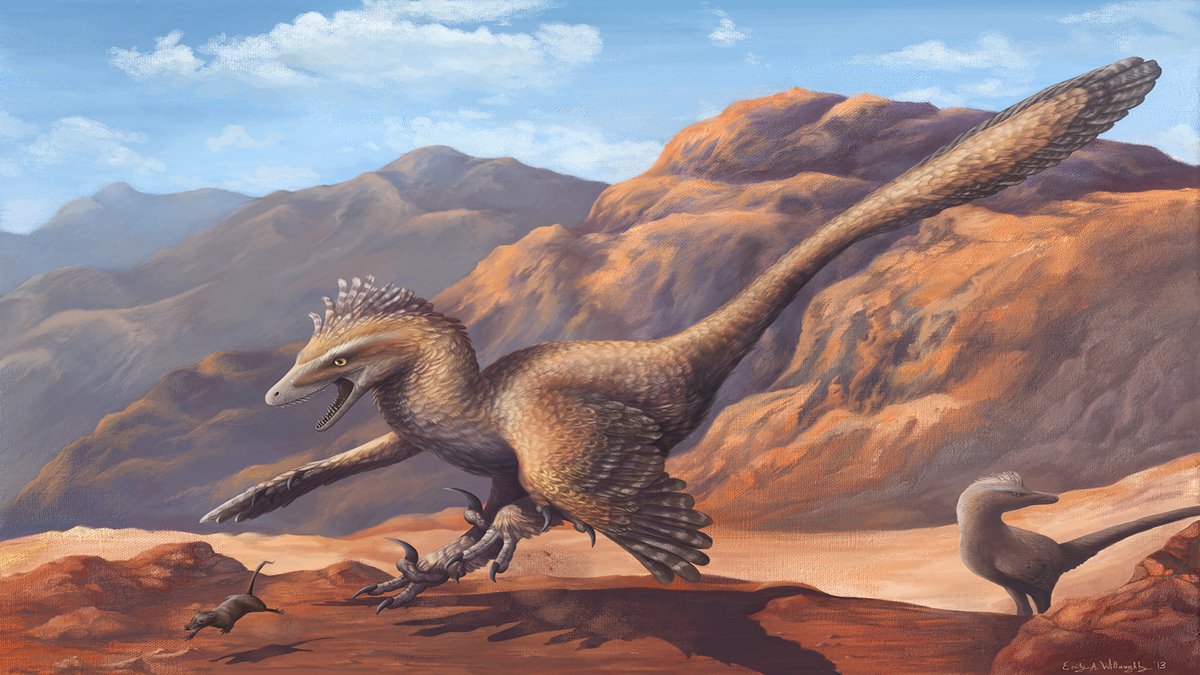
Emily Willoughby, The Velociraptor Hunting Dance (2013). Credit: Emily Willoughby
2010s Modern Discoveries
With the discovery of more than 700 species of dinosaurs, paleontologists can utilize modern technology to understand dinosaur anatomy like never before. For example, soft tissue analysis provides insight into what color or distinctive pattern dinosaurs may have had. As a result, paleoartists can challenge our perceptions of dinosaurs in more ways than ever.
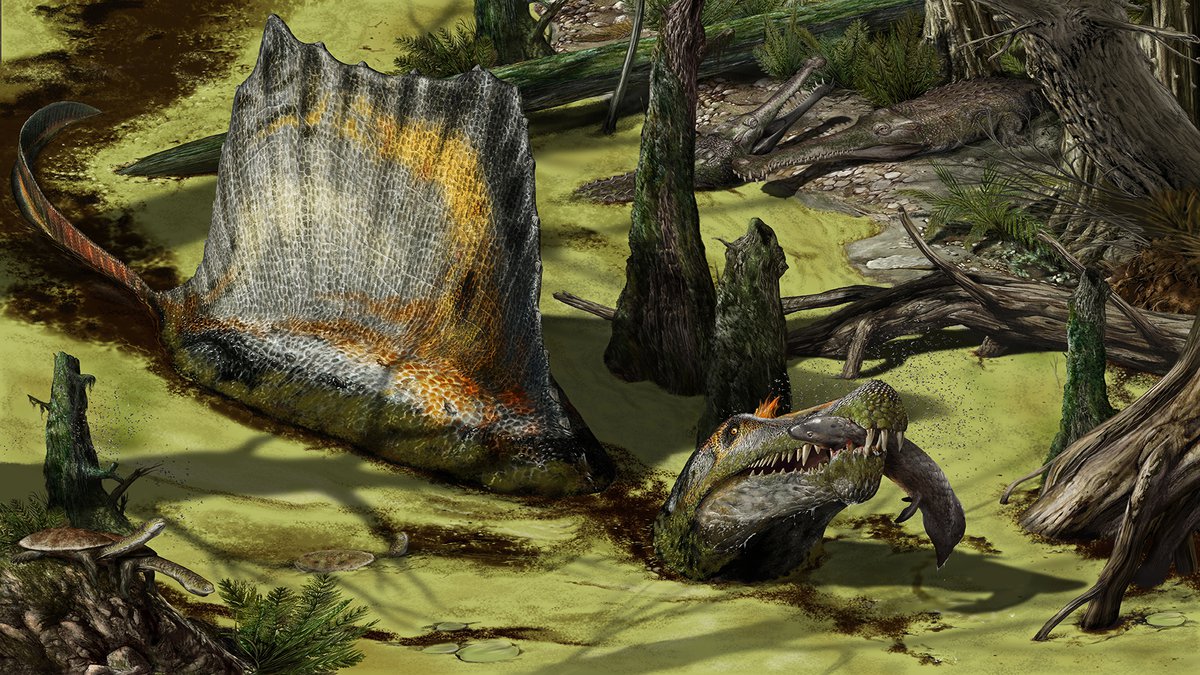
Davide Bonadonna, Spinosaurus pond (2014). Credit: Davide Bonadonna
